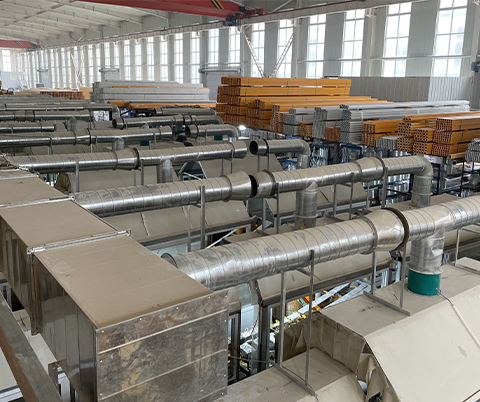loading...
- No. 9, Xingyuan South Street, Dongwaihuan Road, Zaoqiang County, Hengshui, Hebei, China
- admin@zjcomposites.com
- +86 15097380338
- Welcome to visit our website!
Open Steel Grating for Enhanced Floor Safety and Durability Solutions
The Benefits and Applications of Open Steel Floor Grating
Open steel floor grating is a versatile and widely used material in various industrial and commercial applications. Known for its durability, strength, and efficiency in allowing light and air to pass through, open steel floor grating has become a staple in sectors such as construction, manufacturing, and infrastructure.
Composition and Design
Open steel floor grating is typically made from carbon steel or stainless steel, offering a strong and robust structure that can withstand heavy loads. The design consists of a series of parallel and perpendicular bars that create an open framework. The spacing between these bars can be adjusted to accommodate the specific needs of a project, enhancing its utility in different environments.
The most common types of floor grating include the welded type and the press-locked type. Welded grating is constructed using bars that are welded together, providing a solid structure with minimal deflection. In contrast, press-locked grating uses a mechanical method to lock the bars in place, allowing for flexibility in design and ease of installation.
Advantages of Open Steel Floor Grating
1. Strength and Durability Open steel floor grating is designed to bear heavy loads, making it suitable for high-traffic areas. Its resistance to impact and corrosion ensures that it can last for many years, even in harsh environmental conditions.
2. Lightweight Nature Despite its strength, open steel floor grating is relatively lightweight. This characteristic simplifies transportation and installation, reducing labor costs and time.
3. Slip Resistance The open structure of steel grating enhances grip, making it a safer choice in areas where moisture may create slippery surfaces. Many grates also feature a serrated design that further increases slip resistance.
4. Maintenance Maintenance is minimal due to the nature of the material and design. Dirt and debris can pass through the openings, reducing the need for regular cleaning compared to solid flooring options.
open steel floor grating

5. Versatility Open steel floor grating can be used in various industries, including chemical processing, food and beverage, power plants, and municipal facilities. It is suitable for walkways, platforms, stairways, and even as supports for heavy machinery.
Applications of Open Steel Floor Grating
1. Industrial Facilities In factories and warehouses, open steel floor grating serves as flooring for catwalks, access platforms, and machine bases. The use of grating ensures visibility and ventilation, which is critical in manufacturing environments.
2. Building Exteriors Open steel grating is often utilized in constructing exterior walkways or balconies. Its ability to drain water effectively prevents pooling, reducing slip hazards and damage to the structure.
3. Stairways and Ramps The flexibility in the design of open steel floor grating makes it ideal for stairs and ramps, providing structural integrity while ensuring user safety. This application is particularly important in commercial buildings demanding compliance with safety standards.
4. Municipal and Infrastructure Projects Open steel grating is commonly used in drainage grates, walkways in parks, and platforms in public transit systems. Its strength and durability make it an ideal choice for high-traffic public areas.
5. Food Processing In food and beverage facilities, the ease of cleaning and resistance to corrosion make open steel floor grating an industry standard. It helps maintain hygiene in processing areas by allowing spills to drain quickly.
Conclusion
Open steel floor grating offers a perfect blend of strength, safety, and versatility for a multitude of applications across various industries. Its design allows for increased airflow and natural light while maintaining structural integrity under heavy loads. As industries continue to prioritize efficiency and safety, open steel floor grating stands out as an essential material that meets these demands effectively. Emphasizing its benefits can lead to better construction practices and enhanced operational efficiency in numerous environments, making it a preferred choice for engineers and architects alike.
-
The Rise of FRP Profiles: Strong, Lightweight, and Built to LastNewsJul.14,2025
-
SMC Panel Tanks: A Modern Water Storage Solution for All EnvironmentsNewsJul.14,2025
-
GRP Grating: A Modern Solution for Safe and Durable Access SystemsNewsJul.14,2025
-
Galvanized Steel Water Tanks: Durable, Reliable, and Ready for UseNewsJul.14,2025
-
FRP Mini Mesh Grating: The Safer, Smarter Flooring SolutionNewsJul.14,2025
-
Exploring FRP Vessels: Durable Solutions for Modern Fluid HandlingNewsJul.14,2025
-
GRP Structures: The Future of Lightweight, High-Performance EngineeringNewsJun.20,2025
